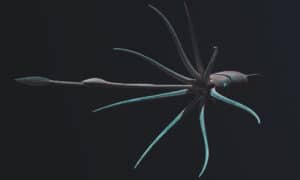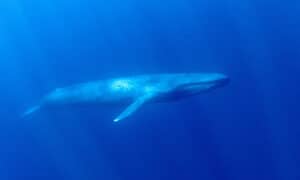While a squid can often be confused with an octopus, these soft-bodied mollusks are quite different for many reasons. Apart from their size and body, these animals can also camouflage! They also have remarkably interesting defense mechanisms and are amazing hunters. Although squids have large predators and are also used for human consumption, they provide a unique addition to our oceans’ ecosystems.
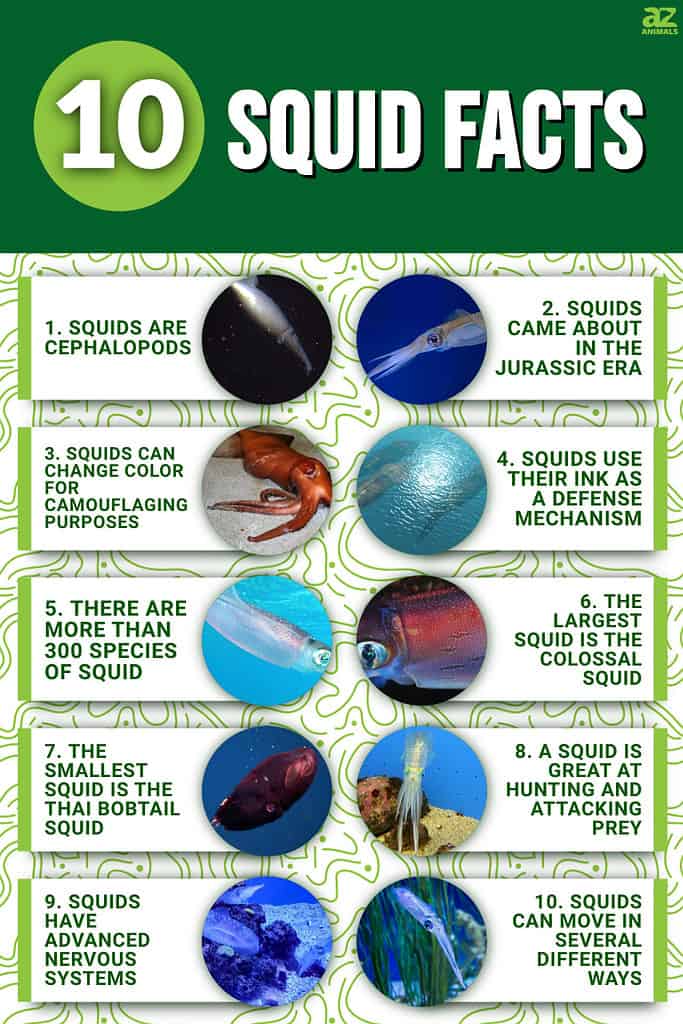
Let’s learn more about these amazing creatures by exploring 10 incredible squid facts!
1. Squids Are Cephalopods
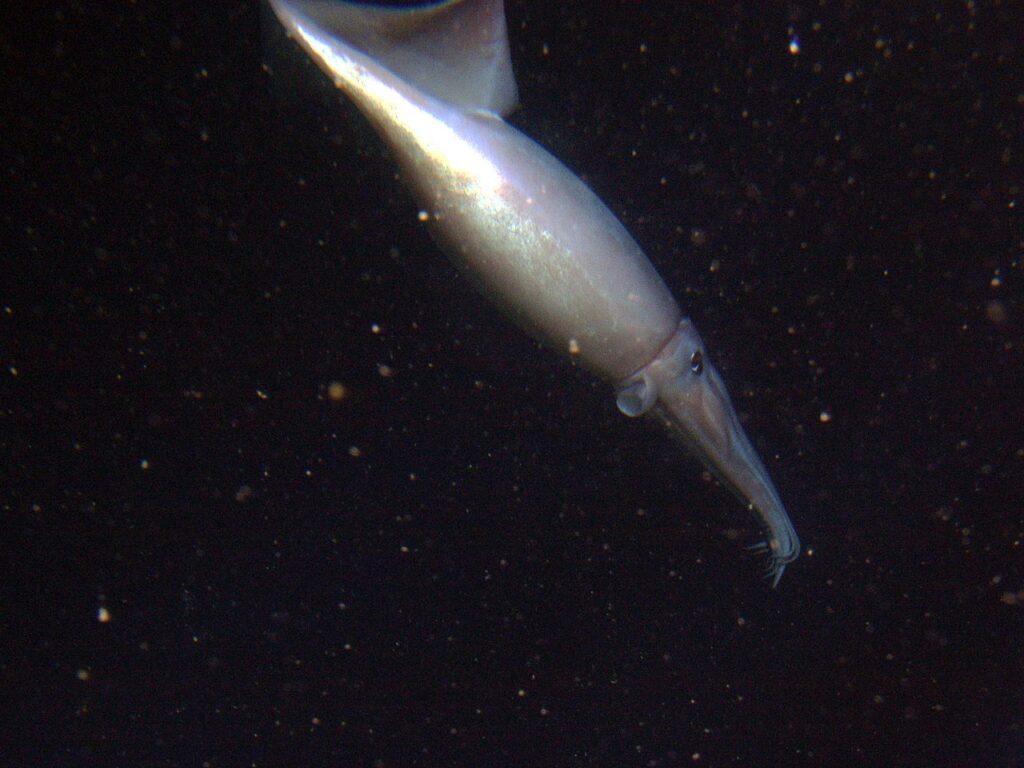
Squids belong to the Cephalopoda class.
©Rick Starr. Credit: NOAA/CBNMS. / CC BY 2.0 – License
While squids are mollusks, they also belong to the Cephalopoda class. A cephalopod is composed of squids, octopi, cuttlefish, and nautilus. Cephalopods have bilateral symmetry with a distinct head and often tentacles. Like all other cephalopods, they have a large, long head that is often confused with their body. They have an impressive high-functioning nervous system and a small internal skeleton within their soft bodies. Their skeleton is in the form of a pen and is primarily made up of a derivative of glucose.
2. Squids Came About In The Jurassic Era
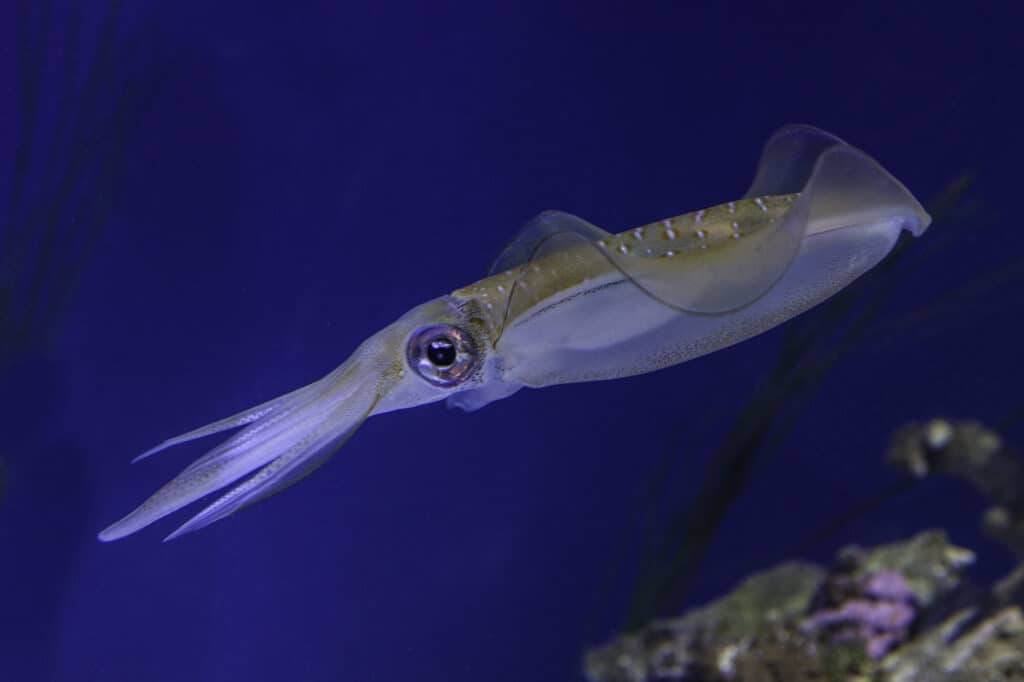
Underwater color images of the Bigfin Reef Squid, Sepioteuthis lessoniana
©iStock.com/Gerald Corsi
Squids diverged from other cephalopods during the Jurassic era, meaning that squid technically evolved more than 100 million years ago! One of the prehistoric squids that our modern-day squids derived from is the fascinating Belemnotheutis Antiques. Scientists tracked this historic squid by using a fossilized ink sac that they found in England.
The Belemnotheutis Antiques has some of the best-kept fossils. Scientists often refer to these fossils when trying to learn about squid during the Jurassic period. They are said to have been extinct by being poisoned by algal blooms. These blooms often served as a breeding sight to thousands of these prehistoric beauties.
3. Squids Can Change Color For Camouflaging Purposes
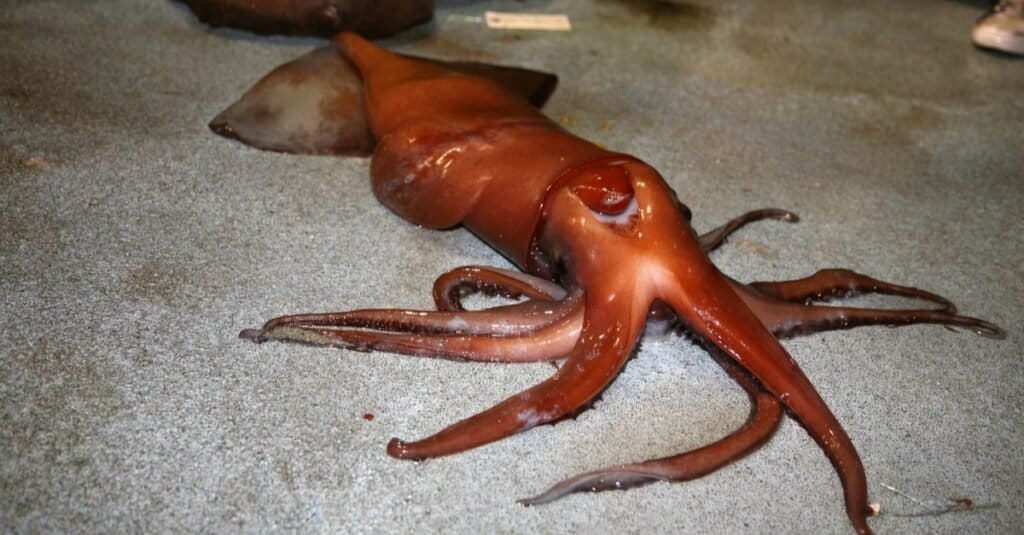
Squids can camouflage by changing the colors of their skin.
©mikeledray/Shutterstock.com
One of the most fascinating facts about squids is that they can camouflage by changing the colors of their skin! They often do this as a defense mechanism, to warn or hide from potential threats and predators. They can do this because they have leucophores, reflectors that produce whiteness within their bodies.
These pigmented, light-reflecting cells allow the squid to control the brightness, hue, and color of their skin. The spectrum of color is quite broad. In fact, many squids can change from their usual color to a variety of other colors. However, it usually depends on the environment in which they are trying to camouflage.
4. Squids Use Their Ink As A Defense Mechanism
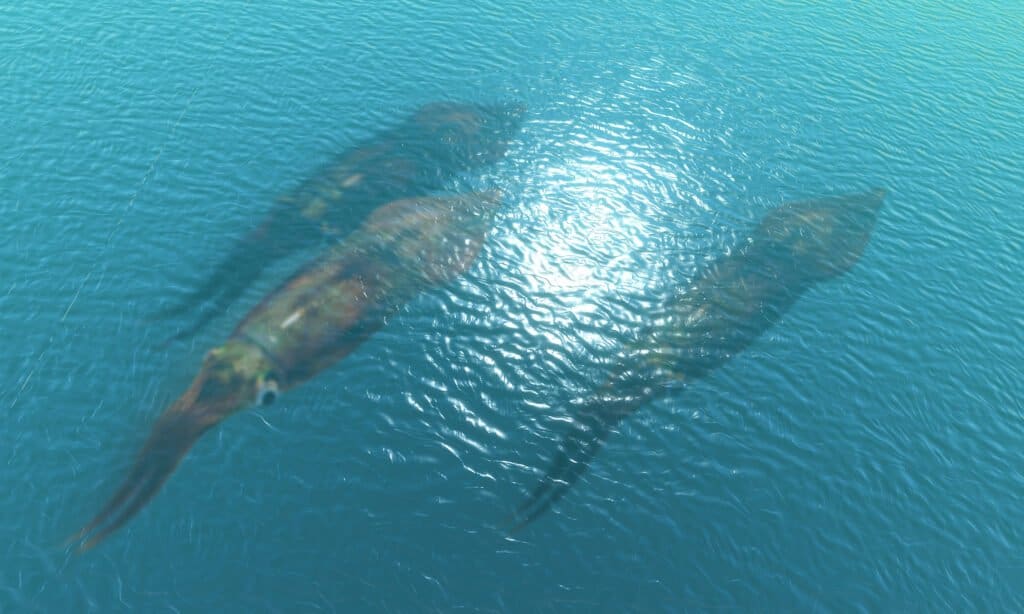
Squids have ink that they project to block the view of their predator.
©Jiri Flogel/Shutterstock.com
Like many other cephalopods, squids have ink that they project, often dubbed the name “ink fish” by fishers. Their ink is composed of many compounds, enzymes, hormones, as well as other properties. Their ink even has composites of metals such as copper, lead, and cadmium, as well as aspartic acid. Humans have been known to use some cephalopod ink for food coloring and other forms of medicine. This is due to its high melanin properties. Interestingly, when a squid ejects its ink in defense, it doesn’t technically harm the predator or threat at bay. Instead, it creates a thick and murky cloud that often blocks the view of their predator. This allows them a window of escape.
5. There Are More Than 300 Species Of Squid
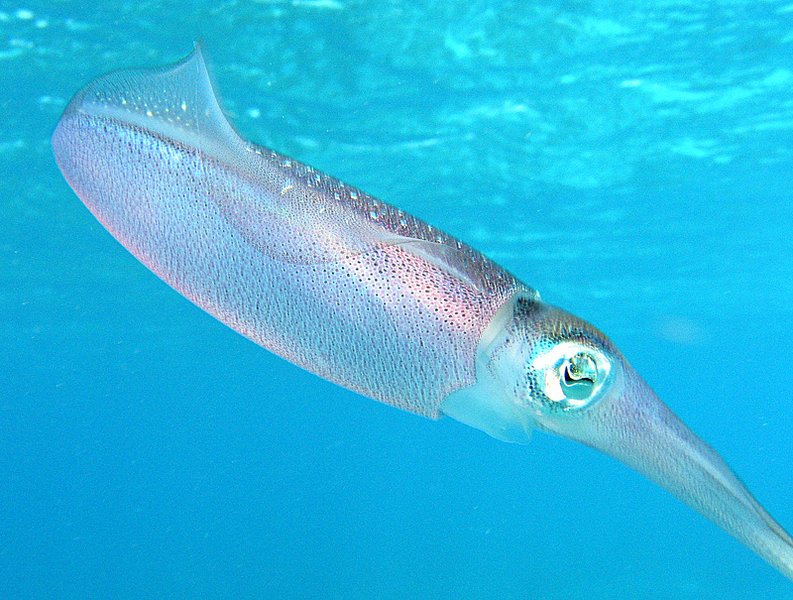
There are at least 800 known species of cephalopods.
©Jan Derk – Public Domain
While there are at least 800 known species of cephalopods, there are over 300 known species of squid alone! These species are usually separated into two categories; myopsida and oegopsida. Myopsida squid consists of four orders of squid and is usually differentiated from oegopsida due to eye structure. Oegopsida squid consists of 24 different families. They are usually categorized in this order because their heads do not have tentacle pockets, and their eyes do not have corneal coverings. Sometimes the arms and tentacles of these squids can even have hooks!
6. The Largest Squid Is The Colossal Squid
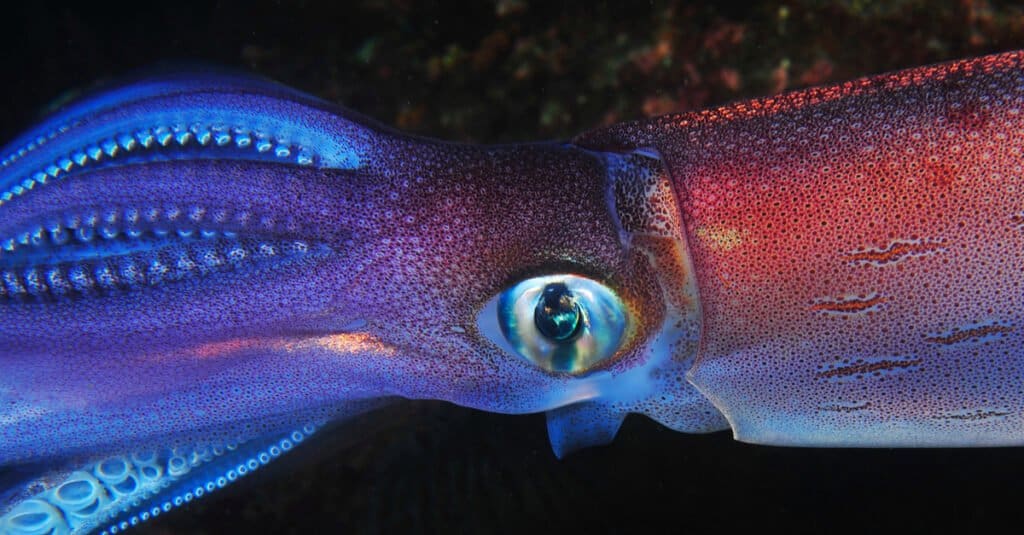
The colossal squid has enormous eyes that assist it in finding prey in the dark ocean depths.
©Rui Palma/Shutterstock.com
Many argue that the giant squid is the largest squid on Earth. However, the colossal squid is, in fact, a bit larger. The colossal squid is the largest squid on the planet in terms of mass. Its size usually averages 1,000 pounds, and its mantle size usually averages around 12 inches in length. These are deep-dwelling squids. Their young typically swim at around 1,600 ft, while adolescents can be found anywhere between 1,600 ft – 6,000 ft. Adults usually dwell in zones between 3,000 ft to 13,000 ft beneath the ocean surface, where only 1% of light can reflect.
7. The Smallest Squid Is The Thai Bobtail Squid
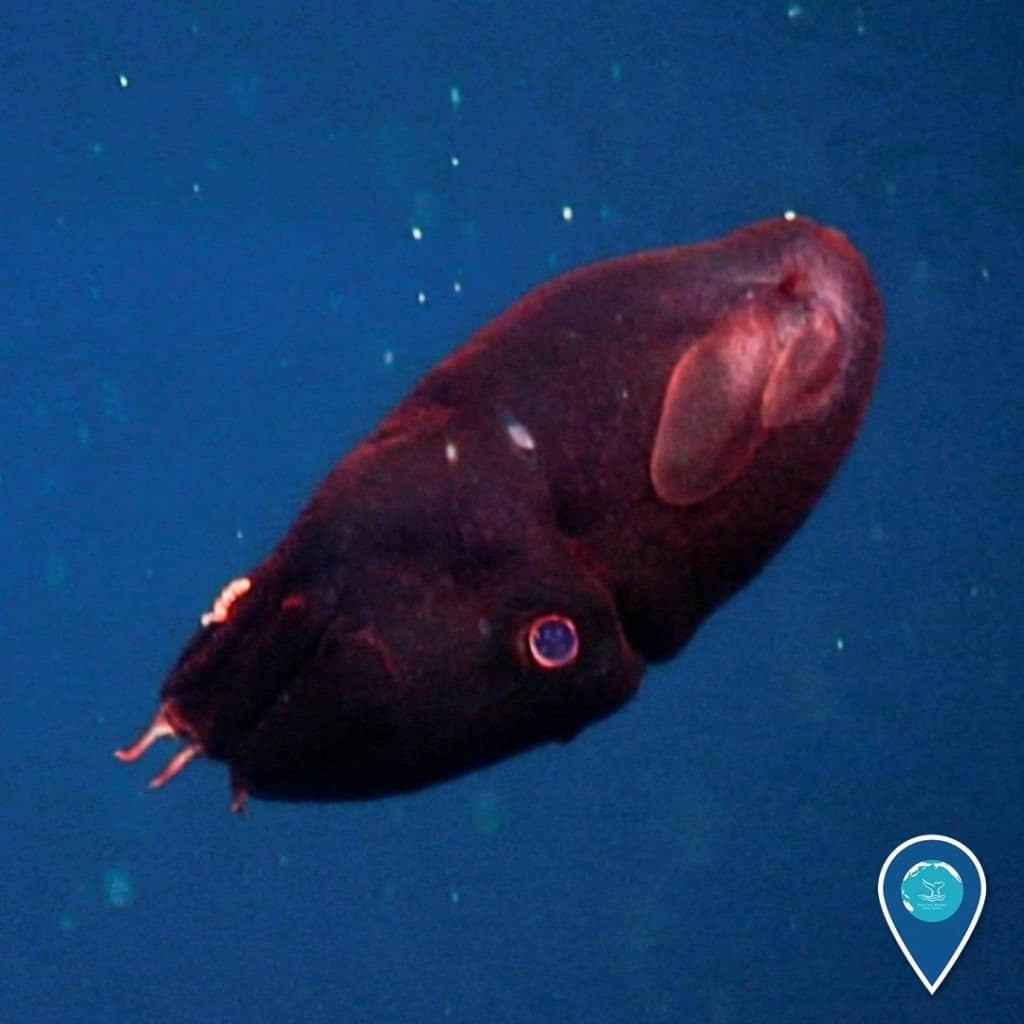
The Thai bobtail squid is the smallest squid known on the planet.
©National Marine Sanctuaries, Public domain, via Wikimedia Commons – License
While many forms of larger squid are the most talked about, the smaller squid species are just as fascinating. The Thai bobtail squid is the smallest squid known on the planet. It averages around 0.4 inches in mantle length when they reach adulthood. This squid is quite adorable because its head is relatively large for its total length. It has small, pudgy tentacles and large eyes that are located at the bottom of the mantle.
8. A Squid Is Great At Hunting And Attacking Prey
Squids are carnivores and primarily feed off fish and crustaceans. Because they have such large arms and suckers, they can capture larger animals in the ocean well. Not only that, some of their salivae contain toxins, often subduing their prey once it’s captured. They usually hunt by sight and touch, snapping out their long arms at a rapid pace. This helps them to capture their meal before they cut their food with their small mouths and swallow it. Some species of squid use their toxic saliva. Others use their hooks and suckers. Some even use large flashes of light to confuse or disorient their prey before consumption.
9. Squids Have Advanced Nervous Systems
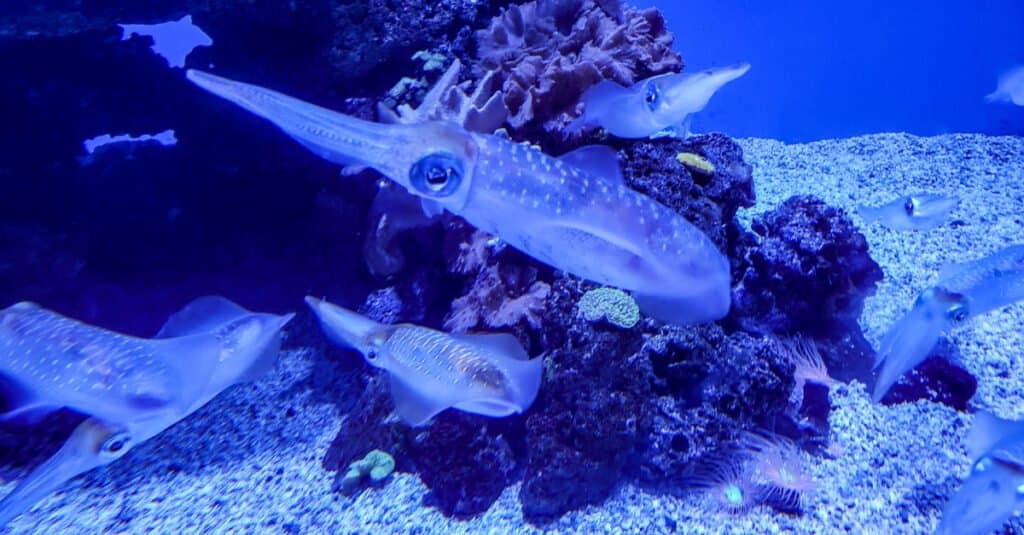
Squids have amazing nervous systems that make up for their relatively small skeletal system.
©Circe Denyer / Creative Commons – License
Even though squids have a relatively small skeletal system, their amazing nervous systems make up for this. They have overly complex brains in the form of rings of nerves located around their esophagus. They also have a group of neuron cell bodies called the Ganglia. It’s located above the esophagus, often receiving sensory information from the eyes and other sensory receptors.
10. Squids Can Move In Several Different Ways
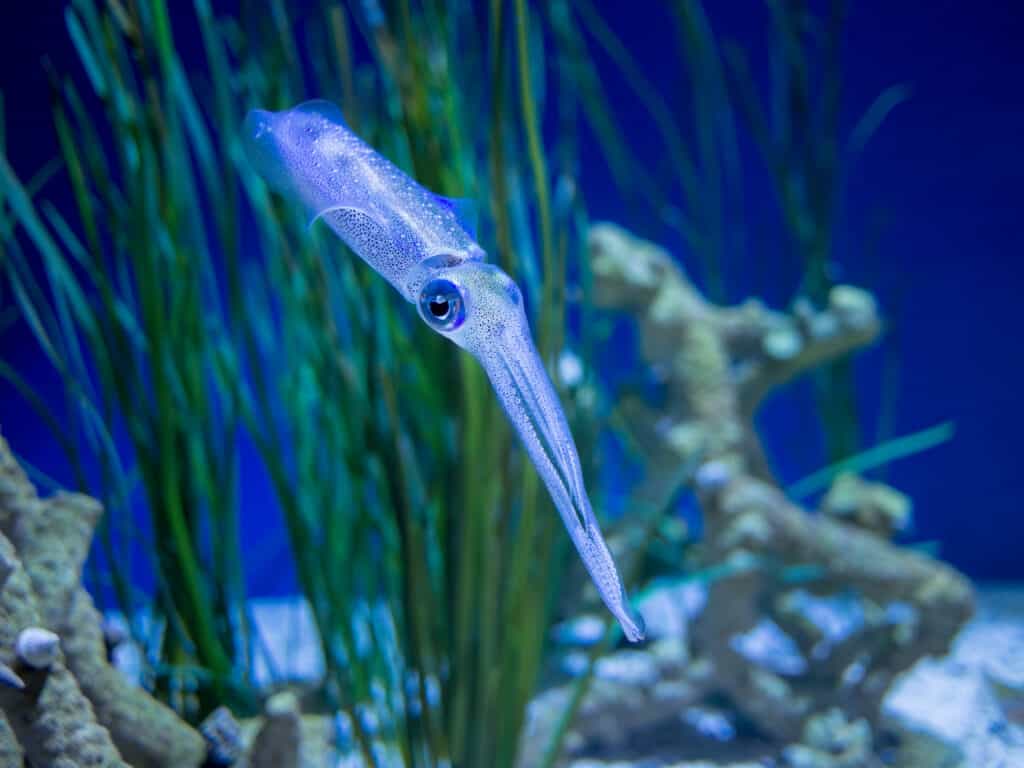
Squids are quite buoyant and move very fast.
©Rhododendrites, CC BY-SA 4.0 <https://creativecommons.org/licenses/by-sa/4.0>, via Wikimedia Commons – License
Not only are squids quite buoyant, but they also move incredibly fast and in various ways! They use slow movement, which drives the squid forward, a common state of locomotion for them. Their most popular form of movement for escaping is through jetting. This is a contraction in the muscular wall in their mantle cavity, which allows them to propel forward as if powered by a jet. They do this by absorbing a vast amount of water before projecting it outward quickly. This allows the jet propulsion to take place and also allows them to escape or move at an otherwise faster rate.
The photo featured at the top of this post is © Rui Palma/Shutterstock.com
Thank you for reading! Have some feedback for us? Contact the AZ Animals editorial team.




